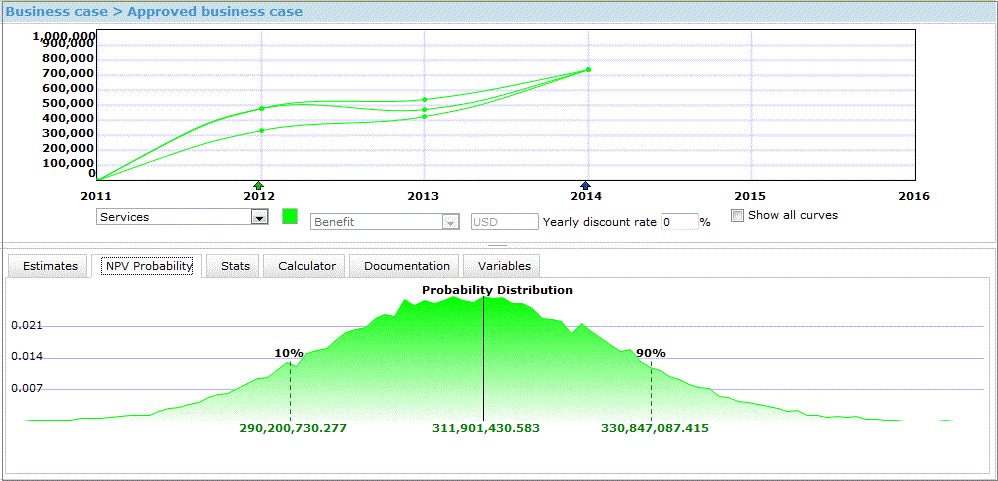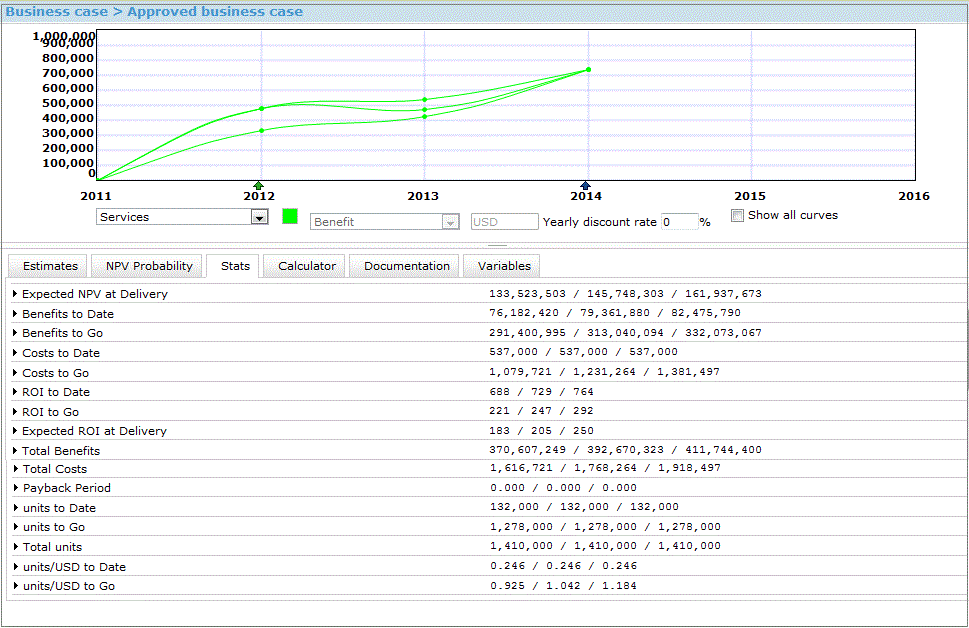

Parameter | Description |
|---|---|
Current NPV | The sum of the discounted benefits from today to the end of the project, subtracted from the sum of discounted costs from today to the end of the project. |
Expected NPV at Delivery | The sum of discounted costs from delivery to project end subtracted from the sum of discounted benefits from delivery to project end. |
Benefits to Date | The sum of the benefits from the start of the project to yesterday. |
Benefits to Go | The sum of the benefits from today to the end of the project. |
Costs to Date | The sum of the discounted costs from the start of the project to yesterday. |
Costs to Go | The sum of the discounted costs from today to the end of the project. |
ROI to Date | The NPV today plus the sum of actual benefits divided by the costs to date. |
ROI to Go | The NPV today divided by the sum of the discounted future costs. |
Total ROI | The sum of the discounted benefits minus the sum of the discounted costs from the start to the end of the project, divided by the sum of the discounted costs from the start to the end of the project. |
Expected ROI at Delivery | The Expected NPV at Delivery over the sum of discounted costs from project start to delivery. |
Total Benefits | The sum of the benefits from the start of the project to the end. |
Total Costs | The sum of discounted costs from the start of the project to the end. |
Payback Period | The time period when the discounted costs balances the discounted benefits. |
<unit> to Date | The sum of the defined units from the start of the project to yesterday. |
<unit> to Go | The sum of the defined units from today to the end of the project. |
Total <unit> | The sum of the defined units from the start of the project to the end. |
<unit>/<cost unit> to Date | The sum of the defined units of each cost unit from the start of the project to yesterday. |
<unit>/<cost unit> to Go | The sum of the defined unit of each cost unit from today to the end of the project. |
